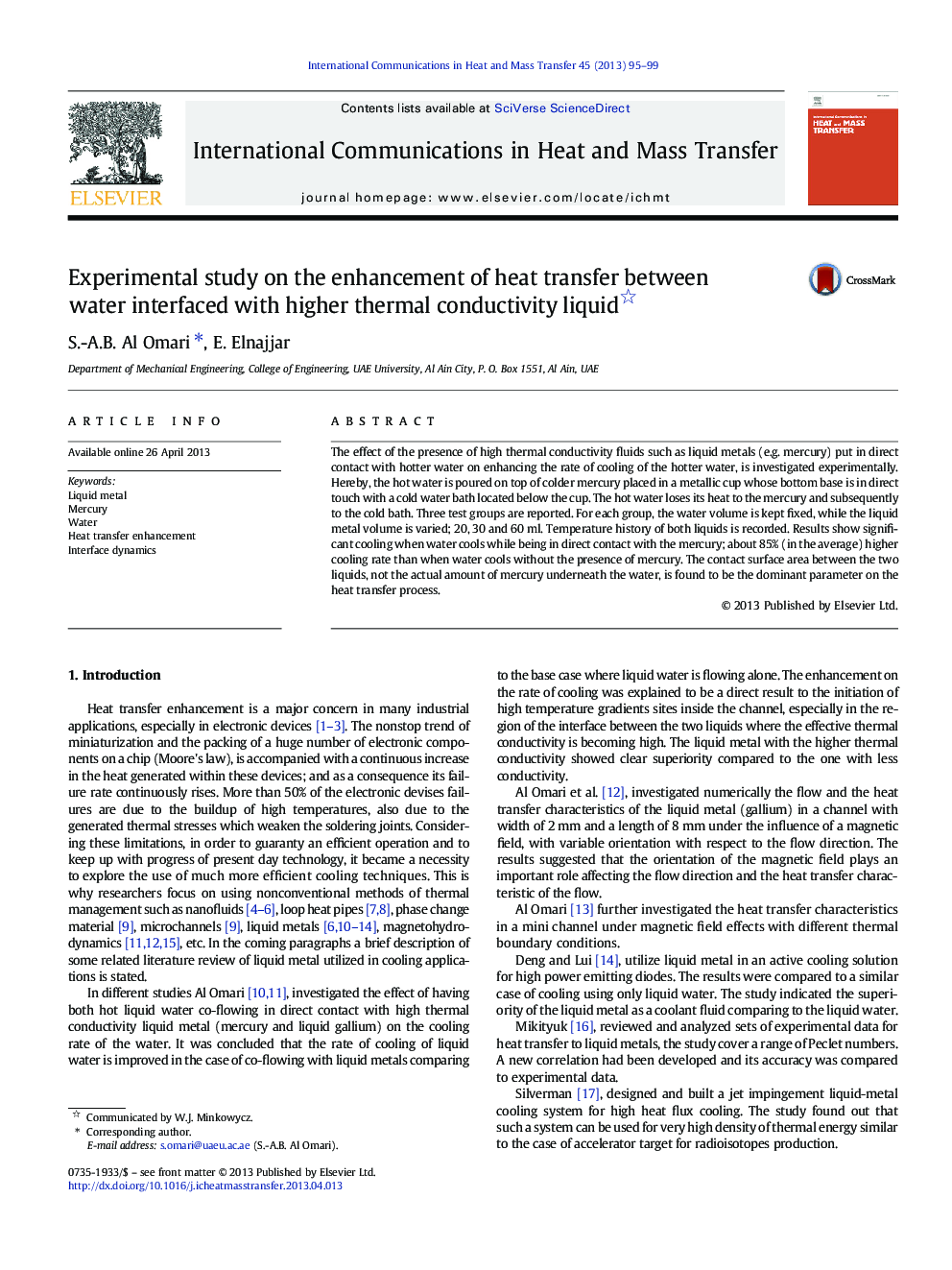| Article ID | Journal | Published Year | Pages | File Type |
|---|---|---|---|---|
| 653428 | International Communications in Heat and Mass Transfer | 2013 | 5 Pages |
The effect of the presence of high thermal conductivity fluids such as liquid metals (e.g. mercury) put in direct contact with hotter water on enhancing the rate of cooling of the hotter water, is investigated experimentally. Hereby, the hot water is poured on top of colder mercury placed in a metallic cup whose bottom base is in direct touch with a cold water bath located below the cup. The hot water loses its heat to the mercury and subsequently to the cold bath. Three test groups are reported. For each group, the water volume is kept fixed, while the liquid metal volume is varied; 20, 30 and 60 ml. Temperature history of both liquids is recorded. Results show significant cooling when water cools while being in direct contact with the mercury; about 85% (in the average) higher cooling rate than when water cools without the presence of mercury. The contact surface area between the two liquids, not the actual amount of mercury underneath the water, is found to be the dominant parameter on the heat transfer process.
